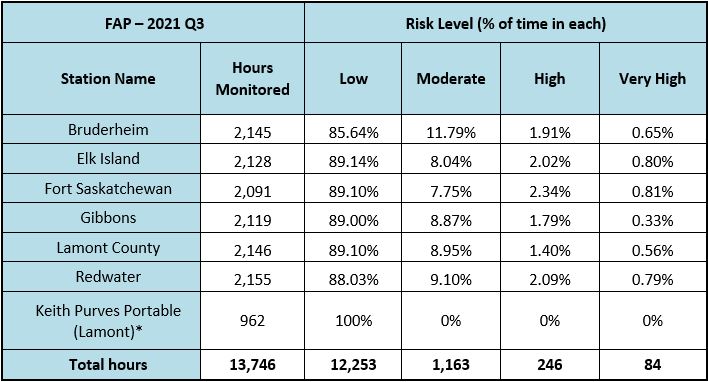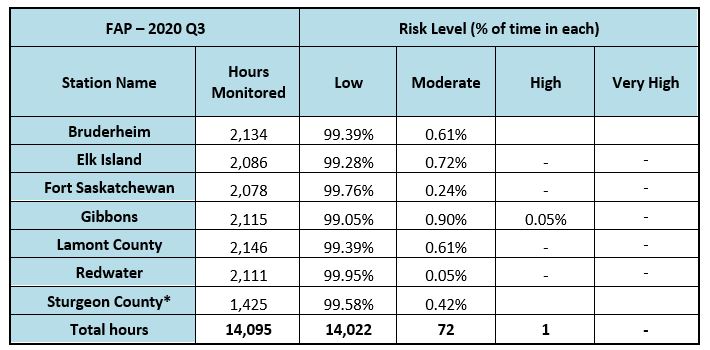Fort Air Partnership (FAP), the organization that monitors the air local residents breathe, released 2021 third quarter Air Quality Health Index (AQHI) results today. The Government of Alberta calculates the AQHI using data collected at seven of FAP’s air monitoring stations.
There were 246 hours of high and 84 hours of very high AQHI rating for the calendar quarter. These results were almost entirely a result of wildfire smoke entering the Airshed from surrounding provinces. Only 11 hours (3.3%) of the high or very high AQHI hours were due to causes other than wildfire smoke. The air monitoring stations at Elk Island, Fort Saskatchewan, and Redwater recorded the most hours of high or very high AQHI results due to the wildfire smoke, while Gibbons recorded the least.

*The Keith Purves Portable monitoring station began reporting AQHI data in Lamont on August 20, 2021.
As a comparison, results from the third quarter of 2020 were: .
.
*The portable monitoring station in Sturgeon County began reporting AQHI data on August 1, 2020.
Air quality in the region was better in Q3 of 2020 compared to the same timeframe in 2021. In Q3 of 2021, there were 1,163 hours of moderate risk AQHI, 246 hours of high risk AQHI, and 84 hours of very high AQHI. In Q3 of 2020, there were only 234 hours of moderate risk and two hours of high risk AQHI. Again, the increased number of moderate, high and very high risk hours of AQHI in Q3 of 2021 were almost entirely a result of wildfire smoke entering the Airshed from surrounding provinces
For further details: Fort Air Partnership Q3 2021 Air Monitoring Results

